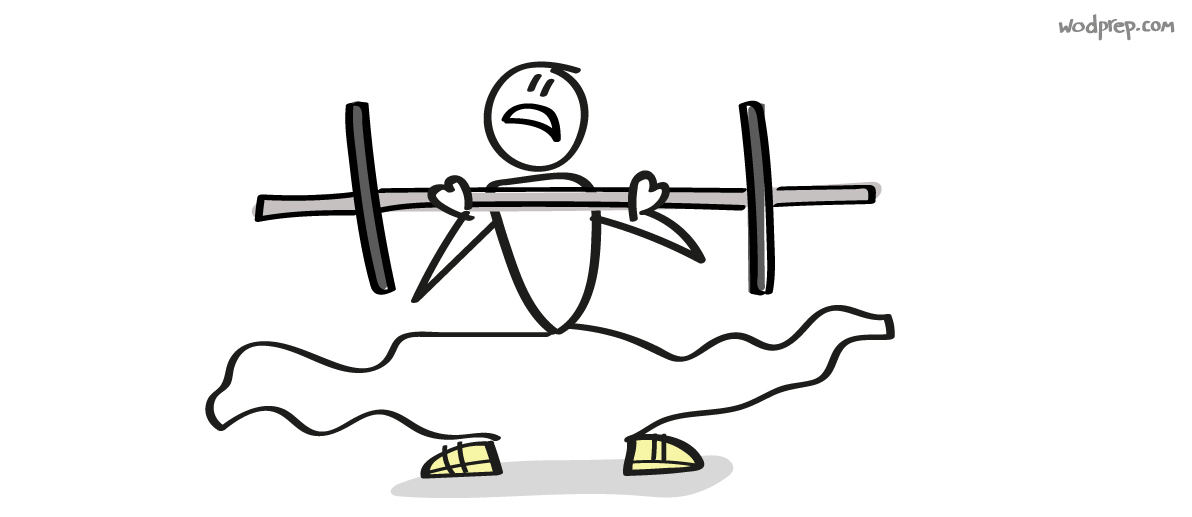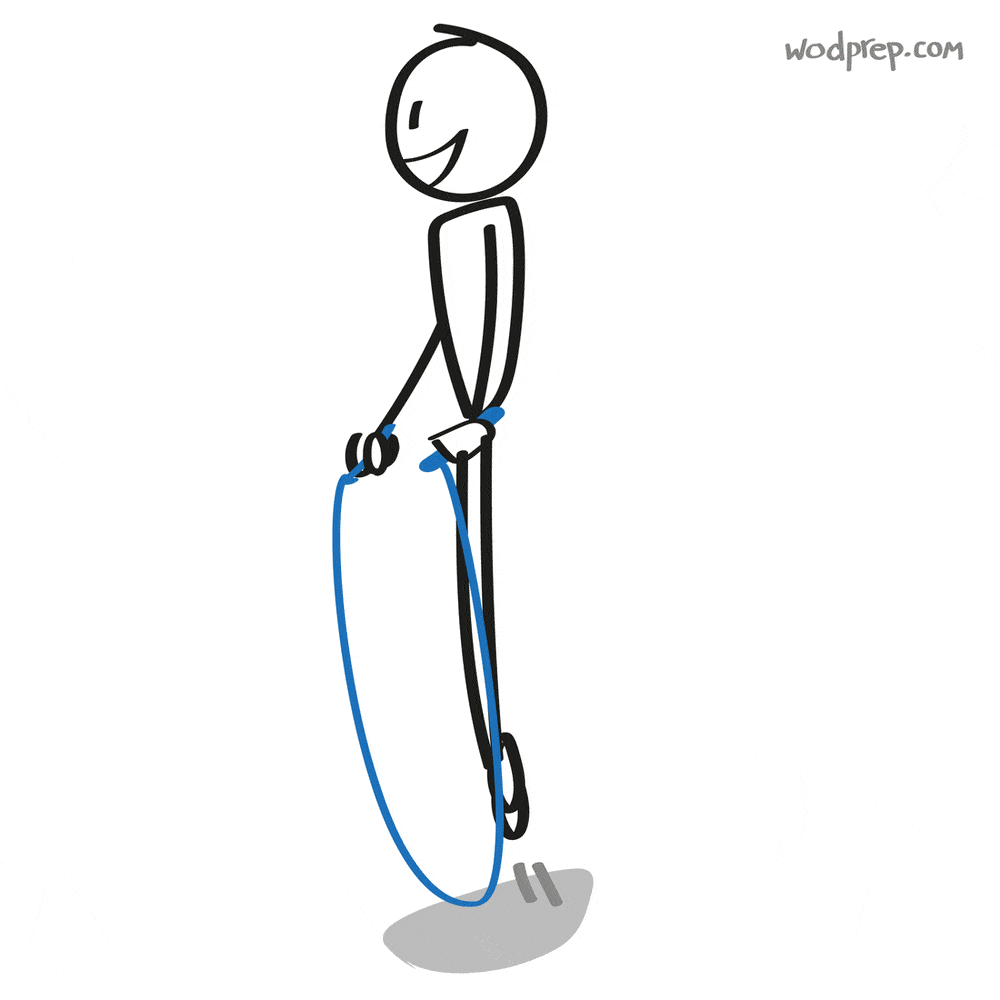Whether you’ve been CrossFitting® now for several years or several months, I think that we can all agree: fitness is a never-ending cycle.
What do I mean by never-ending?
The opportunity for improvement never stops. Which is a beautiful thing, in my opinion. You can improve one skill, then start to work on another, yet can always go back to certain skills and fine-tune them, improve upon them, make them more efficient, etc.
So my question for you today is, are you maximizing your improvement potential?
Or have you already stopped? (Some would call this a “plateau”...)
There are a lot of tools that can help you to keep improving, but today I want to specifically point to one of my favorite: slow motion analysis.
Why use slow motion video analysis coaching?
Personally, I think it’s kind of cool that most CrossFit gyms don’t have mirrors in them. (Okay, admittedly I sometimes miss flexing in the mirror when nobody is watching….)
Yet the ONE downfall to this is that we can’t always see what our bodies are doing throughout different lifts and/or movements.
We’re convinced “My form is totally fine!”, but the tapes don’t lie...

Even if you have a coach watching you on a consistent basis, are they always helping you fine-tune your movements? Are they skilled enough to break things down in slow motion, frame-by-frame for you? And do they have the time to?
For the last several years I’ve been preaching the same thing to ALL of my athletes:
You should be filming yourself.
The Do's and Dont's of slow motion video analysis
Now, that doesn’t mean that you should film all of your workouts and then post them on social media…
“Oh cool, here’s another 65-minute video of your squat session. Exhilarating.”
But in all seriousness, filming quick videos of yourself can be VERY helpful if you...
- Aren’t sure you are doing something correctly (maybe the movement is new to you, etc.).
- Feel that something is slightly “off” and/or you find that you’re inconsistent.
- Want to work on becoming more efficient at (fill in a movement/lift here) and maximize your potential.
Relate to any of the above? Then you should consider slow motion video analysis.
Play it in slow motion (most of our phones have slow-mo mode, there are also apps for this), look at it critically, and pick it apart to the best of your ability.
Believe it or not, even if you aren’t a coach you might find some HUGE errors. It doesn’t always take a professional set of eyes.
Aside from the fact that filming yourself is an obvious and easy tool for improvement, I can also confidently attest that slow motion video analysis has immensely helped a ton of our WODprep athletes. It's easily the #1 coaching tool that we’ve used to help thousands of athletes hit PRs and Rx more workouts.
From double unders to muscles ups and snatches, there is almost always something ‘slightly’ funky going on with form - something that you might have no idea about until you take a look in slow motion.
It’s amazing what a slight change in wrist position, pulling pattern, or head angle can do to change an entire movement.
Not to mention - an entire workout. Still not buying it?
Slow-mo Video Analysis in Action
Let’s rewind back to the beginning of this year, to Open Workout 17.5. Remember that guy?
10 Rounds:
- 9 Thrusters
- 35 Double Unders
We had tons of emails pouring in with questions about double unders. Because for this particular workout of 350 total DU’s, if they weren’t completely on point, the workout was going to own you.
In this instance, athletes who were in our Double Unders Unleashed course reaped huge benefits. Our WODprep coaches were able to break down clips from their 17.5 videos, provide slow motion video analysis, and point to where exactly the issues were. And then advised on how to fix it.
Those athletes' scores SKYROCKETED.

“But Ben, my coach at the gym already does all of this!”
That’s fantastic, I’m glad you have a physical coach helping you out and offering feedback, that can be very crucial when it comes to improvements. But (no offense) my experience has been that many coaches will offer verbal cues, but rarely are they able to take the time and actually analyze your video for you - in slow motion - on the spot.
So, with that said, we’d love to be your second opinion.
Just like many people choose to go to several doctors seeking medical advice, you shouldn’t rule out the second opinions in diagnosing movement sticking points.
Because like many scenarios in life, there isn’t always one right answer. We are all built differently as humans, and what worked for a 4’11’’ 20-year-old female might not be the same answer for a 40-year-old 6’ tall male.
Consider slow motion video analysis
If it’s not currently a part of your fitness life, you should make it one. And if you’re ever looking for a first, or second opinion from one (or a few) of our highly-trained and knowledgeable WODprep coaches, we would love to help you out.

I get really fired up about this topic! Probably one of my favorite aspects of coaching online 🙂
Leave a comment and let me know if you have any questions for us!
Which movement do YOU want video analysis for?
Hi Coach Ben! This is interesting. I couldn’t master my ring muscle up 🙁 I will soon record a video
Ring muscle ups are probably our most-reviewed video of all time!
Hi Ben this is a great idea for the DU Unleashed. There are a number of Apps, but one of the best is Coach’s Eye
Great suggestion, can’t wait to try Coach’s Eye
Hey Colin! I personally like the “Technique” app better than Coach’s Eye, but they are pretty much toss-up when it comes to in-phone apps.
When we are reviewing videos in our Athlete Analysis program we actually don’t use either of these – we use quicktime and a couple screen-recording tools and the result has been MUCH better since we can easily use multiple examples, cycle through videos better, and use a bigger screen.
Step 1: Athlete shoots any video on their phone under normal settings (no apps required)
Step 2: They send us the video
Step 3: They get a full slow motion breakdown in return.
It’s been so much fun 🙂
Hey Coach Ben,
My name is Jeff. I am 55 years old. I have been following your trails for awhile now and have had great success with your videos and your shoulder mobility program. I have also read several of your recommended books. I finished 357th Master’s (55-59) in the Open this year and I have a goal to make its to the games by age 57. I have the mindset, fitness and discipline to do this. What I am lacking is programming. Can you help with this?
Respectfully,
JB
Hey JB!
Awesome work in the Open this year, man. With a few skill tweaks I’m guessing you’ll be in the running to make that top 200 next year 🙂
Right now, we offer accessory programming for specific skills. Here’s the list of coaching courses (all come with with programming & video analysis):
– Muscle Up Madness (ring muscle ups)
– Bar Muscle Up Mastery (bar muscle ups)
– Double Unders Unleashed
– Strict Pull-up Strength
– Kipping Pull-up Performance
– Butterfly Pull-up Breakthrough
– Handstand Push-up Power
– Handstand Walk Hero
– Toes To Bar Transformed
– ShoulderROM Unlocked
– Functional Core
– No Nonsense Nutrition
If you’re looking for generalized daily programming, we’re working on something right now, and hoping to release it within a month or so.
Thanks Coach! I’m definitely looking for programming, but I’m not sure “generalized” is the answer. I’m looking for programming that is geared more specifically with competition in mind.
Much Appreciated,
JB
[…] When is the last time you set up a slow motion camera and watched your squat from the front and side frame by frame? […]
[…] don’t necessarily need a coach who is ‘physically’ in the gym with you. Thanks to the internet, smartphone cameras, and free technology… there are a lot of great […]